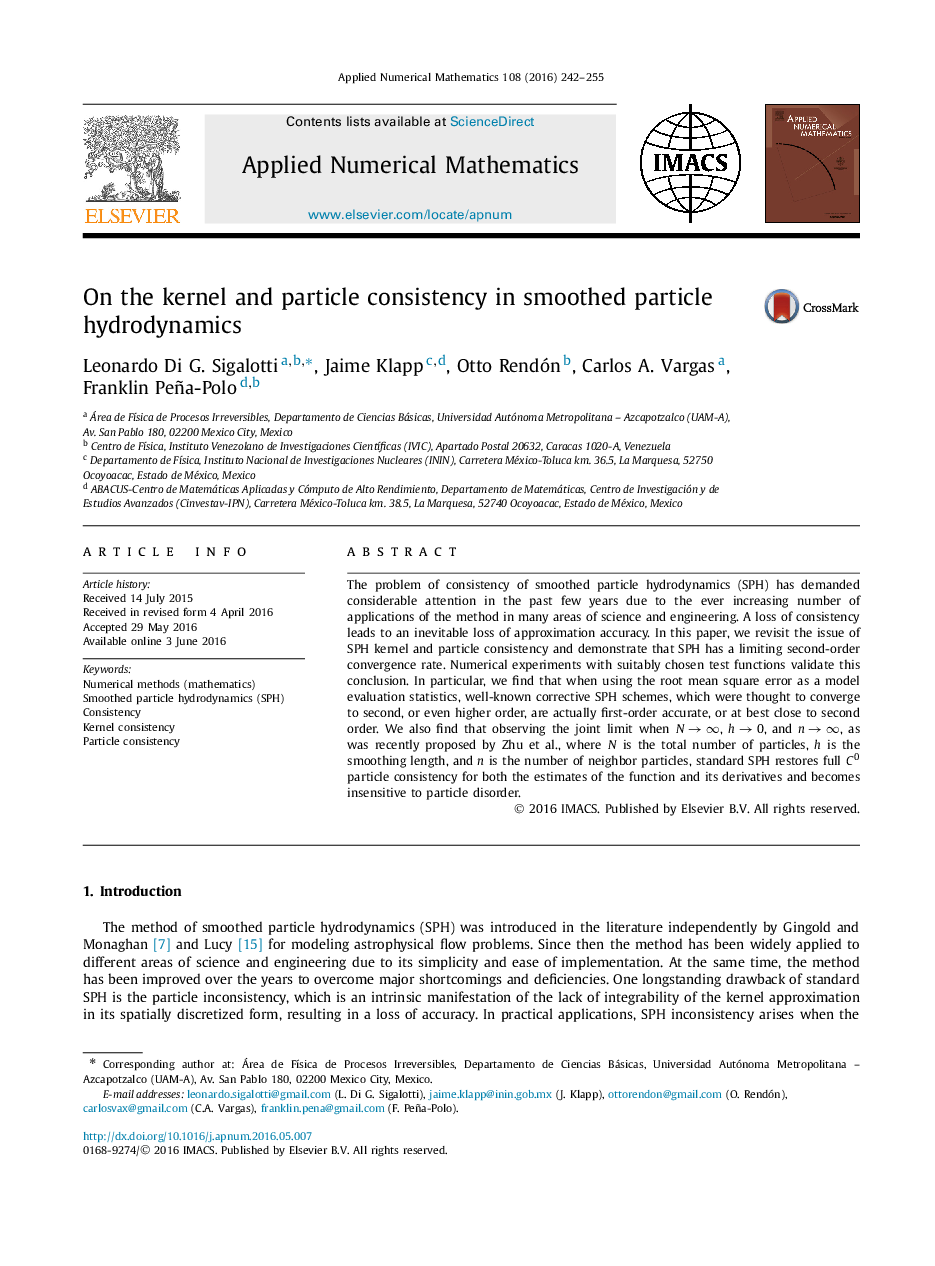| Article ID | Journal | Published Year | Pages | File Type |
|---|---|---|---|---|
| 4644864 | Applied Numerical Mathematics | 2016 | 14 Pages |
•We show that Smoothed Particle Hydrodynamics (SPH) has a limiting second-order accuracy.•Numerical tests validate the second-order limit of convergence for SPH.•Increasing the number of neighbors with resolution improves the performance of SPH.•With varied number of neighbors standard SPH restores zeroth-order consistency.•With varied number of neighbors SPH becomes insensitive to particle disorder.
The problem of consistency of smoothed particle hydrodynamics (SPH) has demanded considerable attention in the past few years due to the ever increasing number of applications of the method in many areas of science and engineering. A loss of consistency leads to an inevitable loss of approximation accuracy. In this paper, we revisit the issue of SPH kernel and particle consistency and demonstrate that SPH has a limiting second-order convergence rate. Numerical experiments with suitably chosen test functions validate this conclusion. In particular, we find that when using the root mean square error as a model evaluation statistics, well-known corrective SPH schemes, which were thought to converge to second, or even higher order, are actually first-order accurate, or at best close to second order. We also find that observing the joint limit when N→∞N→∞, h→0h→0, and n→∞n→∞, as was recently proposed by Zhu et al., where N is the total number of particles, h is the smoothing length, and n is the number of neighbor particles, standard SPH restores full C0C0 particle consistency for both the estimates of the function and its derivatives and becomes insensitive to particle disorder.
